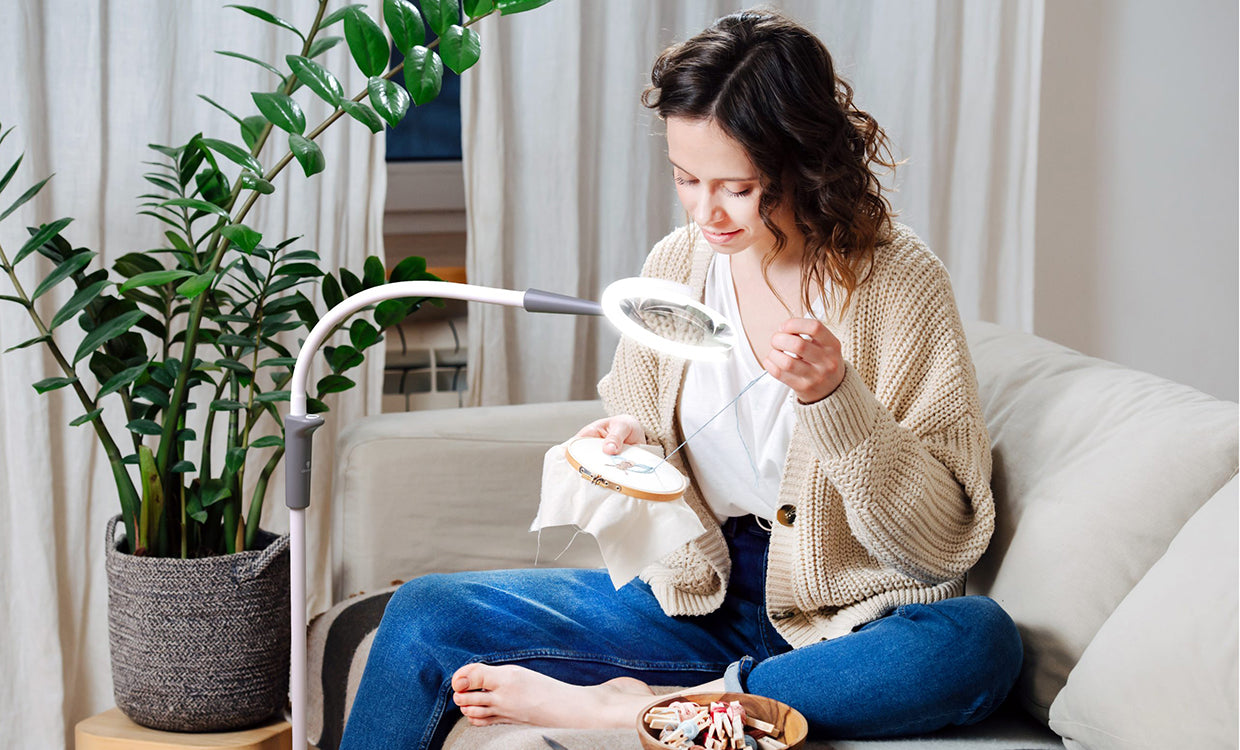You don’t need us to tell you that good lighting is a great way to make lots of tasks easier. But if you’ve only ever had to worry about whether to buy a screw or bayonet fitting before, then plunging into the world of lumens, lux and kelvins may be a bit daunting. We’d like to throw some, um, light on the terminology you’ll come across and make it easier for you to choose the right lighting products.
We need to talk about Kelvin
First, let’s look at light colour temperature – measured in kelvins (K) and named for William Thomson, the first Baron Kelvin.
The lights you’re likely to come across will boast a light colour temperature from 2,700K (a warm white light) to 6,000K (a blue-white light similar to daylight).
Simply speaking, the higher the colour temperature, the more white or blue the light will be. Lower colour temperature bulbs and tubes produce warmer, yellower colours – great for creating a friendly atmosphere, but not so handy if you need to match colours, for example.
A 5,500-6,500K light is similar to daylight, provides great contrast and is excellent for working with colours and small details. It also reduces glare and eye-strain.
Light bulbs with a ‘daylight’ colour temperature are not the same as ‘full-spectrum daylight' bulbs, which produce light across the whole colour spectrum (rather than just mimicking the colour of daylight), and are used to treat Seasonal Affective Disorder (SAD).
The colour temperature of the light is unrelated to the actual heat produced by the tube or bulb. LED and compact fluorescent bulbs and tubes are much cooler to the touch than old-fashioned filament bulbs or halogen bulbs.
Lumens, lux and watts
Next up, brightness. If, like me, you were raised in the era of tungsten filament bulbs, you’ll remember that a 100W bulb was much brighter than a 40W one. Improvements in technology mean that although watts still define how much power a bulb uses, the link to brightness is long gone. These days it’s lumens and lux that measure how much light a bulb provides.
Lumens tell you how much light is emitted from a light source, but lux is how much light can be measured on a surface (this will be affected by the distance from the light source and anything in the way, like a lampshade, for example). A light’s lumens do not change with distance, but its lux will.
Let’s take a really big example to help demonstrate this. The sun produces approximately 41.8 billion billion billion lumens, but the lux we experience on Earth ranges from 1,000 on an overcast day to 32,000-100,000 in direct sunlight. (A full moon gives us about one lux in moonlight, by the way.) On Jupiter, however, the lux will be much lower (about 4,650).
When you’re choosing a light, lux must always include a distance to have any meaning: for example: 6,420 lux at 15cm and 1,850 lux at 30cm.
Beware of choosing the brightest bulbs if you have problems with glare and contrast, as they can cause more problems than they solve.
If you can visit one of our Product and Advice Centres, you’ll be able to try a selection of lights to find out what works best for you.
Why lighting is important
Everyone needs good levels of light and as we get older these needs increase. As your eyes age, less light reaches the retina at the back of your eyes, which transmits information to your brain. Most people aged 60 need three times lighter than when they were 20. Enhanced lighting can be extremely beneficial to people experiencing sight loss, but some eye conditions can result in glare problems even in normal light levels, which can be uncomfortable or even intolerable.
Lighting hints and tips
- Increase contrast by using specific lighting in the right area: a task light in the kitchen can brighten up a work surface, and quick start-up energy-saving lights are a great idea in the hall, stairs and landing.
- Avoid shadows in key areas by ensuring brightness levels are similar as you move through the house.
- Use light-coloured lampshades, keep windows clean and use bright surfaces to reflect as much natural light as possible.
- Use battery-powered LED (light-emitting diode) lights in areas where trailing wires may prove hazardous.
- Use a combination of wall, table and floor lights to give an even spread of light rather than relying on one central light.
- Ensure you are never closer than 30cm (1ft) to any bulb and make sure task lighting is below your eye level, keeping it close to the task to avoid shadows.
- The amount of illumination on an object increases fourfold if the distance between the lamp and the object is halved. Remember to keep some background lighting on as well as it will help prevent eye strain.
Head to our lighting section to find the perfect lamp for you.




